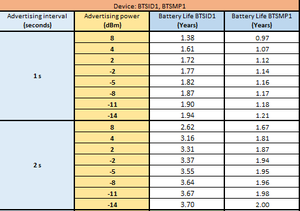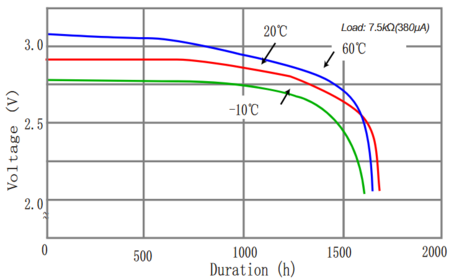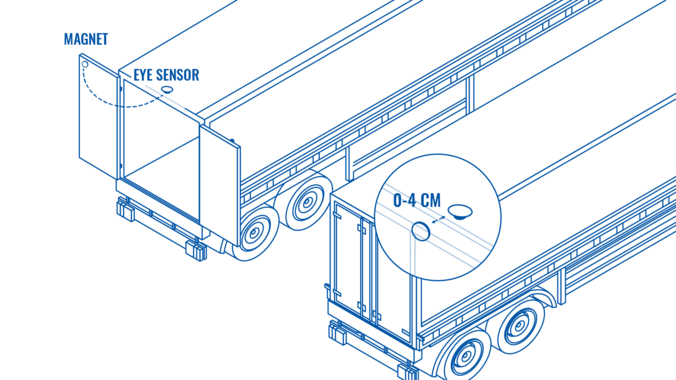Difference between revisions of "EYE FAQ"
From Wiki Knowledge Base | Teltonika GPS
| Line 148: | Line 148: | ||
==== What does having EN12830 mean? ==== | ==== What does having EN12830 mean? ==== | ||
| − | EN12830 | + | EN12830 is a European standard specifying the requirements and test methods for temperature recording devices used in cold chain. It ensures these devices meet specific accuracy, resolution, and response time criteria to maintain product safety and quality. By adhering to the EN12830 standard, companies can ensure that their temperature recording devices are reliable and accurate, thereby maintaining the integrity of the cold chain and safeguarding the quality and safety of temperature-sensitive products. |
==== Are sensors calibrated? ==== | ==== Are sensors calibrated? ==== | ||
| − | + | This sensor holds an EN12830 certificate and delivers precise measurements with a 0.5°C accuracy class across all working ranges from -20°C to +60°C. Each temperature sensor is calibrated in an ISO 17025-certified laboratory to ensure reliability. | |
==== Can you re-calibrate the sensors? ==== | ==== Can you re-calibrate the sensors? ==== | ||
Yes, recalibration is possible. | Yes, recalibration is possible. | ||
| − | |||
| − | |||
==== Do you need to recalibrate the sensors? ==== | ==== Do you need to recalibrate the sensors? ==== | ||
| − | Recalibration is not mandatory under EN12830. The standard states that the frequency of verification is governed by EN13486, which specifies: | + | Recalibration is not mandatory under EN12830. The standard states that the frequency of verification is governed by EN13486, which specifies: The frequency of checks depends on the user’s needs and the manufacturer’s guidelines. If the temperature measuring instrument is installed on a vehicle that undergoes annual or periodic maintenance, it is recommended (but not required) to check the instrument during those inspections. Some countries may have additional regulations that go beyond EN12830. In such cases, we expect clients to submit their devices for periodic verification, which our devices are designed to pass without needing recalibration. |
| − | |||
| − | |||
| − | |||
| − | |||
| − | + | ==== Our recalibration guidelines: ==== | |
| − | The temperature sensor has a long-term drift of less than 0.01°C per year, meaning it should maintain its 0.5°C accuracy class throughout its expected service life. In other words, recalibration is not expected to be needed after purchase. | + | The temperature sensor has a long-term drift of less than 0.01°C per year, meaning it should maintain its 0.5°C accuracy class throughout its expected service life. In other words, recalibration is not expected to be needed after purchase. |
===<big>Other questions (Questions without category)</big>=== | ===<big>Other questions (Questions without category)</big>=== | ||
Revision as of 10:30, 24 September 2024
Main Page > Sensors > EYE FAQQuestions about Power and Electrical characteristics
How to change the battery / is the battery changeable?
It is not possible to change the battery with the current device models.
How to turn ON the device / does the device need to be turned on?
It depends on ordering code used. Devices can be turned ON from the factory or come in hibernate mode and will need to be turned on by placing a magnet on the device.
What is the battery life for different advertising intervals?
| EYE Beacon / BTSID1 | EYE Sensor / BTSMP1 |
| 2+ years
(Tx=2 dBm; interval: 1 s) |
1+ year
(Tx=2 dBm; interval: 1 s) |
| 5+ years
(Tx=2 dBm; interval: 3 s) |
2.5+ years
(Tx=2 dBm; interval: 3 s) |
| 8+ years
(Tx=2 dBm; interval: 5 s) |
4+ years
(Tx=2 dBm; interval: 5 s) |
| 10+ years
(Tx=2 dBm; interval: 10s) |
5+ years
(Tx=2 dBm; interval: 10s) |
Can I disable not-used sensors to conserve the battery?
From firmware version 1.2.10.Rev.4 separate sensors can be disabled. These are movement, temperature, humidity and magnetic field. Disabling accelerometer sensor will improve battery lifetime. Disabling other sensors will disable advertising only without improving battery lifetime. However, there are options to create special order codes with assembly modifications with only one or selected sensors to be soldered and produced. Such changes will only be considered for large quantity orders or high potential customers. If you do not want to receive particular sensor data, but have no need for saving battery life, you can disable the related sensor IO element in Teltonika Configurator. EYE Sensor will be still sending data, but FM will filter it according to your choice.
Is there any graph to estimate device lifespan with different advertising settings?
Yes, please see attached document.
File:CLIENT VERSION BTSXX1 power consumption calculator-1.xlsx
What is battery voltage when the battery is considered empty?
Around 2.2V is when the device's battery is low and around 2.0V battery can be considered depleted.
How does the battery voltage translate into the percentage of the battery?
At the moment voltage is not directly translated into percentage as the voltage varies depending on the temperature sensor is in. We are working on battery life tests depending on temperature and various advertising frequencies and signal strength and we will be evaluating the possibility to send battery percentage in the future once those tests are done. For now, you can refer to the graph from the battery datasheet for a rough estimation of the remaining battery life.
What is the battery chemistry used in beacons/sensors and what is the self-discharge rate of these batteries?
CR2450 Lithium, Manganese Dioxide(MnO2), Self-discharge 1% per 1 year
What is the direction of EYE Senor's or Beacon's antenna?
BTS Beacon/Sensor antenna is unidirectional. Antenna signal strength is very similar in all directions.
What is the BLE transmission range of BTS devices?
According to the tests done by us using FMB1YX trackers: the detection range in an open field in real conditions for the EYE Beacon/Sensor was 80 to 100m. Take note that the maximum range will also depend on the quality of the receiving device antenna.
Questions about EYE Accessory configuration (EYE APP)
Whats the default pin?
123456
Can you save configuration a template of a Sensor or Beacon and use it with another sensor/beacon when using the EYE app?
You can save the configuration - this is available with EYE APP 1.2.0-60 Uploading the configuration according to saved template will come in the near future. You can follow EYE APP updates here: EYE APP errata
Can you change configuration of EYE devices remotely?
No, the devices only have bluetooth chip, so you have to be relatively close to the device to update configuration. If you are using a 3rd party or developing your own application/software, GATT characteristics can also be used to configure the device. No implementation of updating EYE devices via services other than EYE APP or GATT characteristics is planned in the near future.
Can you update firmware or configuration on a few sensors at the time via the EYE app?
Group updates are not available and are not planned to be available in the near future.
Why EYE APP does not show MAC on iOS (iPhone)?
The iOS operating system does not show MAC addreses on iBeacon or Eddystone protocols because of Apple introduced privacy policy. On iOS EYE app can request and display MAC address only when the device is connected in configuration mode.
Why EYE app does not display devices with iBeacon protocol on iOS (iPhone)?
Because of Apple introduced privacy policy iOS operating system does not return required data to identify Eye Beacons and EYE sensors configured with iBeacon protocol. Therefore we cannot identify our device and display it in the app.
Is it possible to configure the movement sensor to advertise only when movement is detected and if no movement is detected - no information is sent from the sensor?
It is not possible at the moment, and such a feature is not planned to be available in the near future. Movement status is advertising with every periodic data packet.
Do I need to configure UUID / Instance ID, how is UUID / MAC generated?
UUID/MAJOR/MINOR/Namespace/Instance IDs are automatically generated in the factory all are unique. MAC printed on the casing is assigned separately according to the list of available MACs and is not related to UUID/MAJOR/MINOR in any way.
Generally EYE Beacons are following format: BTSID1 7CD9F4000001-7CD9F40FFFFF BTSMP1 7CD9F4100000-7CD9F41FFFFF
Questions about FMBxxx compatibility with EYE Accessories
How many sensors can you use with FM device?
At the moment 4 sensors (Base firmware / advance mode), this is expanded up to 100 in base firmware release which includes new EYE features. It is available with 03.29.XX base firmware. You do not need to configure the MAC address but instead enter the name (or part of name) of the sensor and all sensors with that name (or part of name) will be scanned. In case there are more than 100 sensors found then the ones with the strongest RSSI will be saved and put into the data packet.
How to configure FM device for reading data from EYE sensor with standard Teltonika configurator (advanced mode)?
Please follow the steps in EYE Sensor wiki page: https://wiki.teltonika-gps.com/view/EYE_SENSOR_/_BTSMP1#Teltonika_configurator_.28standard_functionality_.2F_advanced_mode.29 Please follow the steps in EYE Sensor wiki page: https://wiki.teltonika-gps.com/view/EYE_SENSOR_/_BTSMP1#Teltonika_configurator_.28standard_functionality_.2F_advanced_mode.29
Questions about Protocols
Are EYE Beacons and Sensors supported by other IoT devices?
EYE Beacons or EYE Sensor configured as Beacon should be supported by any device that supports iBeacon or Eddystone protocols. EYE Sensors have Teltonika protocol and custom GATT characteristics, so most likely support has to be developed. Please check with the manufacturer of the device in question if they support iBeacon, Eddystone, or Teltonika EYE Sensor's protocol. EYE Sensors protocol link:https://wiki.teltonika-gps.com/view/EYE_SENSOR_/_BTSMP1#Protocol_description
Is magnet information broadcasted as true/false flag or with a counter?
At the moment only presence is sent(1 or 0). A counter is only included in movement sensor's data. It is possible to get evaluation firmware version with magnet counter functionality. It is planned that it will be available in base firmware in one of the future updates. You can follow changes here BTS firmware errata Source:https://wiki.teltonika-gps.com/view/EYE_SENSOR_/_BTSMP1#Protocol_description
Is it possible to receive the RSSI value from the sensor/ID?
Yes, both send RSSI voltage in the Eddystone/iBeacon protocol part. Source: https://wiki.teltonika-gps.com/view/EYE_BEACON_/_BTSID1#EYE_Beacon_Protocol_overview
What data can be read from the accelerometer?
Only angle at the moment, with special development it is possible to receive accelerometer data. Angle consists of 3 Bytes, i.e.: Angle is received as 0BFFC7 in frame advertised by the sensor, it parses to: C1 – Most significant byte represents device pitch. Device pitch can be from -90 to 90 degrees. In this example device's pitch is 0000 1011 (2's complement) = 11° degrees. FFC7– Two least significant bytes represent device's roll. Device's roll can be from -180 to 180 degrees. In this example device Roll is 1111 1111 1100 0111 (2's complement) = -57° degrees Source:https://wiki.teltonika-gps.com/view/EYE_SENSOR_/_BTSMP1#Protocol_description
What is TX / RFU / Calibrated Power?
The TX power value - value of processors power output to antenna. Calibrated Power - in the Beacon protocol is a critical parameter that helps estimate the distance between a beacon and a receiving device. For example, this value is sent in Byte 29 of the iBeacon packet and is typically set to a predefined value in the sensor's configuration. It indicates the transmitting power of the beacon at a reference distance of 1 meter and is measured in decibels referenced to 1 milliwatt (dBm). RFU - Similarly to Calibarated Power, RFU is set for Eddystone protocols. The difference is that for iBeacon, the calibrated power is reference RSSI value that is the expected RSSI value at 1 meter from the beacon, while for Eddystone, it is the expected RSSI value at 0 meters. Currently Teltonika is providing beacons with pre-calibrated RSSI at 1m for iBeacon and RSSI at 0m for Eddystone that should be suitable for most use cases, however we plan to introduce user calibration in the future.
What does having EN12830 mean?
EN12830 is a European standard specifying the requirements and test methods for temperature recording devices used in cold chain. It ensures these devices meet specific accuracy, resolution, and response time criteria to maintain product safety and quality. By adhering to the EN12830 standard, companies can ensure that their temperature recording devices are reliable and accurate, thereby maintaining the integrity of the cold chain and safeguarding the quality and safety of temperature-sensitive products.
Are sensors calibrated?
This sensor holds an EN12830 certificate and delivers precise measurements with a 0.5°C accuracy class across all working ranges from -20°C to +60°C. Each temperature sensor is calibrated in an ISO 17025-certified laboratory to ensure reliability.
Can you re-calibrate the sensors?
Yes, recalibration is possible.
Do you need to recalibrate the sensors?
Recalibration is not mandatory under EN12830. The standard states that the frequency of verification is governed by EN13486, which specifies: The frequency of checks depends on the user’s needs and the manufacturer’s guidelines. If the temperature measuring instrument is installed on a vehicle that undergoes annual or periodic maintenance, it is recommended (but not required) to check the instrument during those inspections. Some countries may have additional regulations that go beyond EN12830. In such cases, we expect clients to submit their devices for periodic verification, which our devices are designed to pass without needing recalibration.
Our recalibration guidelines:
The temperature sensor has a long-term drift of less than 0.01°C per year, meaning it should maintain its 0.5°C accuracy class throughout its expected service life. In other words, recalibration is not expected to be needed after purchase.
Other questions (Questions without category)
What is the purpose of LED on the devices?
It does not have any functions currently that would be apparent for users. It is used internally for double checking device visually that it is powered correctly. It is left on PCB for future development options.
Can EYE sensors detect temperature less than -20°C?
It can detect less than -20°C. We have tested devices in -40°C to +80°C. However, it is not recommended to use the device in temperature outside the compatible range for longer than a few hours. Temperature beyond recommended ranges will drain the battery faster than expected.
Can the EYE Sensor store data in memory and send it later in case of BT connection issues?
Please refer to EN12830 sensor for temperature logging to internal memory. Temperature data stored in EN12830 modification is accessible via EYE App or your own custom solution. We are working on firmware for FM devices to retrieve historic data as well. Other data can be stored to internal memory but would require firmware development that is not currently planned.
Do you need an additional magnet accessory to detect a magnet with the EYE Sensor? What is magnet detection range?
Yes, we offer the needed accessory order code on our landing page. The maximum range for magnet detection is 4cm. Please refer to the below image for mounting recommendation.
How to identify pitch/roll directions?
Please see attached videos:
| Roll Axis | Pitch axis |
|---|---|